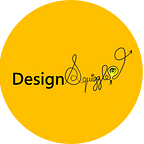Why we should start with What-is?
When I was seven years old I was fascinated by skating. I pestered my mom that I wanted to learn to skate and she found a roller blade skating rink nearby. The coach was a nice guy, on the first day he showed us his top students skating around in inline skates — of course, the fancy kind and in pink colour too — zipping like the beach wind. Next day my sister and I were asked to report with training skates — the steely ugly kind with four wheels — helmet, knee, and elbow and wrist pads. We guys were to start the drudge work, to walk around the skating rink one step at a time. We were stuck with learning the basics when the senior guys were zooming around us navigating with precision and taking swift turns. For us though, even walking was an excruciating task, as we fell several times on our bottoms and hit our head — helmet and all — on the concrete floor — a plausible cause of my creativity and eccentricity. Nobody likes this part of the learning process — it is really hard. So we spend nearly seven weeks doing just that, walking like zombies. It only took us the next one week to go from walking to skating to zooming.
That is exactly what it looks like to practice Design Thinking. You spend hours and hours and hours in the problem area. As we keep learning new things our mind is gearing to run into solution mode, but it is now that you need to train your mind to spend that hard 70% of the time on problem finding rather than problem-solving.
Be it you using JTBD (Jobs to be done) or be it practising Human-centred design thinking the key is to spend a lot of time understanding the past and the present before jumping into the future. Like master Oogway says,
Yesterday is history, tomorrow is a mystery, but today is a gift. That is why it’s called the present.
So during problem-solving, it is always best to take the following phases,
‘What is’ — is the most important phase of the entire cycle. Because it is all about understood how the jobs are getting done today. So to understand what is happening now you need to go to your customers and end users — not just ask, but also observe how they are performing the job. See what is missing, ask what is hard, what is easy, observe what they like, what they dislike and so on.
The top three ways to understand the current approach is to become a design researcher and play the role of,
Ethnographer: Go out there to the place where the customer or end user is using the product or service and observe their behaviour. Imagine parking yourself in a shopping mall and observing what people are doing.
Interviewer: Ask them questions about what jobs they were trying to get done, what was easy or hard, when was the last time they got the job done? Ask them about their routines, and how they go about performing a job. Remaining objective, open-minded is really important when using this technique. Imagine asking a working parent how they do their weekly shopping.
Experiencer: To get into role yourself. Personally witnessing the job first hand and making a keen observation of every interaction you have, every step that you have to do to get the job done. It is easy sometimes to fall into the bias of an expert. If you are the creator or designer of a particular system then it becomes hard to stay objective on this task. You have already navigated every possibility of the solution. If the job space you are exploring is new then this is a great way. Imagine you taking a shopping cart and trying to shop.
Be current on your user’s current situation
We will slowly cover through the different phases in the upcoming blogs. How do you go about understanding how your customers are achieving their outcomes today? What has worked well for you?
